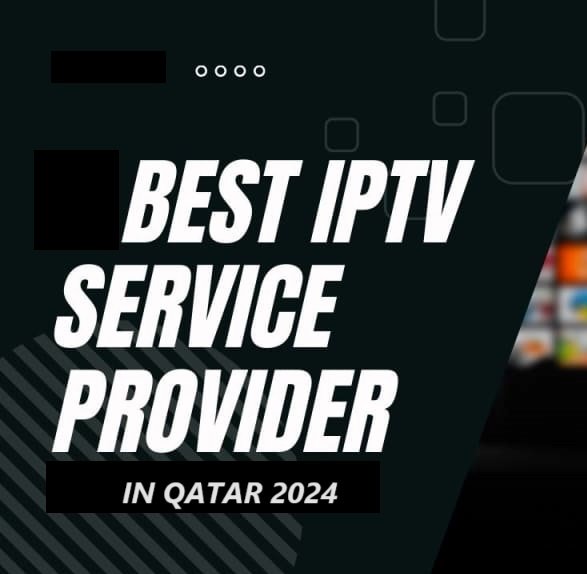
Building your own IPTV server can be an exciting and rewarding experience, especially if you want to take control of your entertainment system or offer IPTV services to others. IPTV (Internet Protocol Television) allows you to stream TV channels, videos, and media content over the internet rather than using traditional broadcast methods. In this guide, we’ll walk you through the basic steps of setting up your IPTV server from scratch.
IPTV Server Setup Guide
Why Set Up Your Own IPTV Server?
- Full Control: You manage the content, streaming quality, and bandwidth.
- Cost-Efficiency: Lower recurring costs compared to subscribing to an IPTV service.
- Customization: Tailor the server to your needs, offering specific channels or content.
- Potential Income: If set up correctly, you could resell IPTV services.
Now let’s dive into the process.
1. Choose the Right Server Hardware
The first step in setting up an IPTV server is selecting the right hardware. You need a machine powerful enough to handle video encoding, decoding, and streaming to multiple users.
Hardware Requirements:
- Processor: A multi-core processor (Intel Xeon, AMD Ryzen, etc.) is ideal for transcoding and streaming.
- RAM: At least 8GB of RAM for light use, 16GB or more if you expect more users.
- Storage: A large SSD for fast access to stored content and smooth streaming.
- Network: A stable and high-speed internet connection (preferably 1 Gbps) is essential for managing multiple streams.
- GPU (Optional): A dedicated graphics card can help with video encoding if you’re dealing with 4K or HD content.
Operating System:
- Linux: Ubuntu or CentOS is recommended due to their flexibility and stability for server applications.
- Windows Server: An option for those familiar with the Windows environment.
2. Install IPTV Middleware
Middleware is essential for managing users, content, and stream distribution. It serves as the interface between your server and the clients.
Popular Middleware Solutions:
- Xtream Codes: One of the most popular IPTV middleware platforms, offering user management, billing, and channel organization.
- Flussonic: A robust media server software with a focus on IPTV streaming.
- TVHeadend: An open-source alternative, great for home servers or small-scale IPTV operations.
Middleware Features to Look For:
- User management and access control.
- EPG (Electronic Program Guide) support.
- Compatibility with multiple devices (Smart TVs, mobile apps, etc.).
- Billing integration for subscription services (optional).
Once installed, you’ll need to configure the middleware according to your server and streaming requirements.
3. Content Acquisition and Encoding
An IPTV server doesn’t come with content; you need to source it yourself. This can be legal TV channels, your own media, or other content sources.
Content Sources:
- Satellite/Cable Channels: You can legally acquire broadcast content using a satellite dish or cable connection.
- Video on Demand (VoD): Create a library of VoD content for users.
- YouTube/Twitch Streams: If allowed by their TOS, you can integrate online streaming sources.
- Local Content: Upload movies, shows, or personal videos directly to your server.
Encoding Content:
- Software: Use tools like FFmpeg or VLC Media Player for encoding and transcoding your content into the required formats (MPEG-TS, HLS, etc.).
- Resolution/Bitrate: Ensure you offer multiple resolution options (720p, 1080p, 4K) to cater to different bandwidths.
4. Streaming Protocols
Choosing the correct streaming protocol is crucial for smooth delivery of IPTV content to various devices. Popular protocols include:
- HLS (HTTP Live Streaming): A widely used protocol that’s compatible with most devices.
- RTSP (Real-Time Streaming Protocol): Best suited for real-time streaming and live broadcasts.
- MPEG-DASH: Another adaptive streaming protocol that works well for a wide range of devices.
- UDP/RTP: Common in broadcasting applications, especially for live content.
Make sure your IPTV middleware supports these protocols or whichever you choose.
5. Secure Your IPTV Server
Security is critical, especially if you plan on offering IPTV services to multiple users.
Security Measures:
- Firewall: Configure a strong firewall to protect against unauthorized access.
- Encryption: Use SSL certificates for encrypting communications between your server and users.
- User Authentication: Implement user authentication to prevent unauthorized access to your streams.
- VPN (Optional): Using a VPN can provide an additional layer of security, especially for remote access.
6. Set Up Billing (For IPTV Service Providers)
If you’re planning on selling IPTV services, you’ll need a billing system integrated with your middleware.
Billing Integration Options:
- WHMCS: A popular billing platform that supports Xtream Codes and other middleware solutions.
- Paypal, Stripe, etc.: Set up payment gateways for recurring subscriptions.
- Free Trials and Promotions: Offer free trials or discounted packages to attract new customers.
Make sure to comply with local regulations regarding streaming and content distribution if you plan to sell IPTV services.
7. Testing and Optimization
Before launching your IPTV service, it’s crucial to test the system thoroughly:
Things to Test:
- Stream Quality: Ensure streams load quickly and maintain good quality without buffering.
- Device Compatibility: Test on different devices (Smart TVs, Android boxes, FireStick, mobile apps).
- EPG and Channel Listings: Check that your electronic program guide (EPG) is properly populated and working.
- Bandwidth and Load Handling: Simulate heavy user traffic to ensure the server doesn’t crash under load.
8. Maintaining and Scaling Your IPTV Server
Once the server is live, regular maintenance is essential to ensure continued smooth operation.
Maintenance Tips:
- Monitor Bandwidth and Traffic: Ensure your server can handle the current user load without any slowdowns.
- Update Middleware and Software: Regularly update your middleware, streaming software, and operating system for security and performance enhancements.
- Backup Your Data: Regular backups will ensure you don’t lose content or user data.
If your IPTV service grows, you might need to scale by adding more servers or improving your hardware.
Conclusion
Setting up an IPTV server requires technical knowledge and attention to detail, but the rewards can be significant. Whether for personal use or as a business, controlling your IPTV setup allows you to offer customized content, improve streaming quality, and provide an enjoyable experience for users.
If you’re looking for an IPTV service provider to enhance your experience or purchase the best IPTV apps and tools, visit IPTVSMARTER+ for premium services and software.



